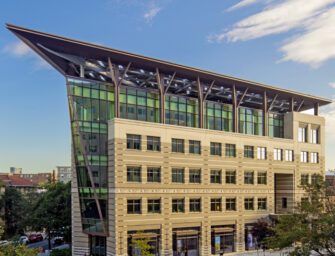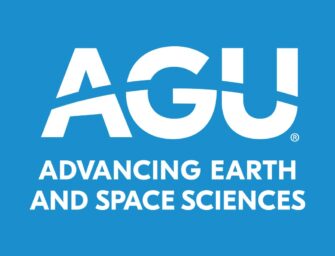A View from the Board: The AGU Centennial Year and Beyond

Chris Ballentine, AGU Board Director
The AGU Centennial Year and Beyond
December was a delight. The AGU Fall Meeting was one of the most exciting I have attended, the celebration of AGU’s renovated net zero Washington headquarters a milestone, and the launch of the of AGU Centennial the sign of a great year to come. The December bonanza was fantastic but sitting on the AGU Board of Directors and seeing the thought, detail, and hard work put into all of these activities by the AGU staff and members made this doubly so. We each have our different interactions with AGU activities which in turn form our views of what AGU does for the huge and diverse community that is Earth and space sciences. For non-US academics like me, this is most often obvious through the AGU fall meeting where I catch up with collaborators to formulate new ideas and directions, meet new and exciting colleagues and catch up with the breaking science. It can be easy to forget that many of the publications I use or reference in my work exist because of AGU, or to miss some of the AGU foundational work that underpins and supports our global community.
AGU is a non-profit organization and fortunately it has generated surplus funds in some years, primarily driven by meetings and publishing activities. This makes it possible for AGU to reinvest in our community through a series of AGU programs which, in their different ways, all enrich our community and improve our efficiency and reach. All require resourcing to be effective and are essential for supporting the multi-level roles that a modern and global science society must now engage in. Over the last five years, some tens of millions of dollars have been invested by AGU back into the community through its programs.
One key task of the AGU Board is to review critically the ongoing activities that are targeted to achieve the current strategic objectives. These include:
- The Digital Transformation that underpins AGU’s infrastructure and supports the mission, providing digital access to the ever more diverse material our community produces (and soon you will see the first fruits of this effort in a new digital experience);
- The launch of the new AGU Ethics Policy that has provided the exemplar for many other science societies and increasingly the reference for institutions around the world;
- The Thriving Earth Exchange (TEX) that brings together community leaders, scientists and sponsors to address together local challenges that might relate to natural hazards, resources or environmental change. TEX has now reached over one million people in the US and made its first steps internationally.
Other key programs include the Centennial, Talent Pool, Professional Development, keeping abreast of and proactively addressing the political and scientific Shifting Landscape, and launching GeoHealth. I hope the titles of these programs are sufficient to give a sense of the range and importance of these activities for our community.
With the rise of political isolationism, attacks on science, and obfuscation of reliable information sources, the leadership role of international science societies like AGU becomes ever more important. This is not just through enhancing international communication and collaborations, but by providing a trusted reference for policy makers. There will be even more critical environmental, resource and political challenges in the coming decades. These will need international solutions. AGU has an essential role to play and will be developing its new strategic plan over the next two years. This is an outstanding opportunity for us all to think about what we want AGU to achieve for our community and society in general:
- What strategic topics and directions might best help this community to contribute to solving local and global environmental, resource and political challenges?
- Are there membership models that extend beyond the one we have at the moment to engage and enable an even broader international community?
- How can AGU develop further our community’s influence with policy makers in the US and elsewhere?
- How can we better facilitate, inspire and support great science in the future?
Developing a new AGU roadmap to start the next hundred years could not come at a more crucial time.



There are no comments
Add yours